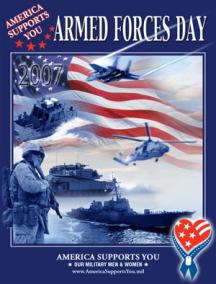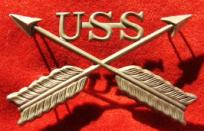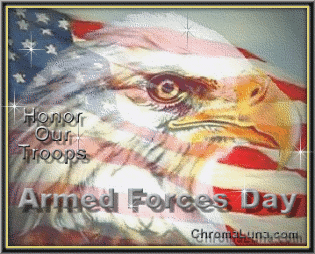 WARPATH
WARPATHAmerican Indian Warriors Association- Special Forces Association (Airborne)
Armed Forces Day 2010
By Roy Cook: AIWA- SFA 75
Each of our patriotic holidays has it’s own particular character. For some reason Armed forces day has been shuffled off to the side. It may be the ecumenical quality of the holiday. The ‘all together,’ ecumenical, principal seems, to me, to reflect the better qualities of the America we need to strive toward. “We the people…” mean all the people. Just as all the armed forces means, we are all in the struggle together and not one military service branch or unit or race of European immigrant. When we enter the military, we raise our hand and pledge to uphold the US Constitution. It is the Supreme law of the land. We hope this or some days we will all read and understand the outstanding document that defines who we are as a people, all together, Americans.
In this essay, we will review the history of Armed forces day and the Inter-tribal nature of Native American Warrior tradition of military service in the United States armed services from the beginnings of this Nation. There are a few suggestions on avenues to better enjoy and appreciate the patriotic holiday.
President Harry Truman proclaimed the first Armed Forces Day (AFD) on May 20, 1950. Every year since then, on the third Saturday in May we've honored the men and women who have served in uniform. We will celebrate its 60th anniversary on May 15, 2010.
 This
year think of getting the whole community involved. Plan a celebration
and have entertainment. Get your local political to attend your celebration.
This could be a fundraiser and include a flag rising or flag ceremony.
This
year think of getting the whole community involved. Plan a celebration
and have entertainment. Get your local political to attend your celebration.
This could be a fundraiser and include a flag rising or flag ceremony.
MANDATORY FUN DAY
An appreciation of Military, Veterans, and their Families dedication and selfless service to our country.
Who: Current Military, Veterans, and Their Families
What: A peaceful military occupation of a local family friendly establishment
Where:
Fun 4 All, 950 Industrial Boulevard, Chula Vista, CA 91911
When: 9am – 2pm, 15
May 2010
Veterans Village of San Diego, in partnership with Fun 4 All of Chula Vista, want to show our admiration for the men and women of America’s Armed Forces and their families by taking over the Fun4All and providing them with hours of FREE fun, food, and entertainment. Community Circles of Support for Veterans and their Families would like you and your family to spend the day with us enjoying everything that Fun4All has to offer (Miniature Golf, Go Karts, Bumper Boats, Batting Cages, Arcade Games). Don’t worry, we’ll feed you too. (No MREs)
Everything will be free provided you can prove that you are or were a member of the United States Armed Forces or a dependent of a service member.
(Military ID, Dependent ID, VA ID, DD-214 or Orders with Photo ID)
On Armed Forces Day, find ways to honor those who are serving our country, yesterday and today. Contribute to the preservation of a local historic military or battle site near you. Organize a cleanup, or simply read and share the following short American Indian military overview with your family and friends.
From the first conflicts against oppression that founded this new nation, USA, to the present, American Indians have served in the U.S. military in a variety of roles. During the Revolutionary War, Americans Indians sought initially to remain neutral, but eventually most sided with the British, who seemed to favor fewer expansionists’ ideas. Nevertheless, Oneida and Tuscarora in south and central New England ultimately rallied to the American cause against the British and their Tory allies. Primarily these were alliances, but sometimes Indians, particularly religiously converted Tribal members, and served as individuals in the American forces. Indian Nations also fought on both sides in the second war with England in 1812: in the South, the Choctaw and Cherokee fought for freedom with the US troops. Tragically, their military service would be betrayed by the impeachable actions of Andrew Jackson and the corrupt War department.
 Deliberate
wars of aggression and invasion to blatantly acquire territory across
the Great Plains from 1860 to 1890, members of certain tribes, especially
the Crow and Pawnee, fought alongside regular army soldiers, black and
white, against their traditional tribal enemies, especially the Lakota
Sioux, helping the army wipe out tribal resistance to the encroaching
settlement.
Deliberate
wars of aggression and invasion to blatantly acquire territory across
the Great Plains from 1860 to 1890, members of certain tribes, especially
the Crow and Pawnee, fought alongside regular army soldiers, black and
white, against their traditional tribal enemies, especially the Lakota
Sioux, helping the army wipe out tribal resistance to the encroaching
settlement.
During the postwar
reorganization of the U.S. Army in 1866, Congress authorized the, United
States Indian Scouts with an enlistment of up to 1,000 Indians as “scouts,”
making permanent a previously informal policy. The Indian Scouts, who
may have reached as many as 1,500 in some decades, won high praise from
generals like George Crook and Nelson A. Miles for their horsemanship,
tracking, and fighting ability. An experiment begun in 1890 by Secretary
of War Redfield Proctor and Gen. John Schofield to add all-Indian companies,
under white officers, in each of the western regiments, was abandoned
by 1897. What is retained today is, in the Army Special Operations, Special
Forces Regiment, the badge of the American Indian Scouts: Crossed Arrows.
http://aiwa.americanindiansource.com/specialforces/SpecialForces.html
In the twentieth century, American Indians, who participated in all the major U.S. military conflicts, would serve in many military branches as inter-tribal individuals, not in American Indian scout units. In World War I, perhaps as many of one-half of the American Indian populations were not U.S. citizens and were not eligible for the draft. Volunteer military service was rewarded with U.S. citizenship. Including draftees and volunteers, some 10,000 Indians served in World War I. The service of these Indians contributed to the decision of Congress in 1924 to grant U.S. citizenship to all American Indians. Disgracefully some western states, with large American Indian populations, would take until the 1960’s to ratify and make this law in their state.
In World War II, some 25,000 Indians served in the military, up from the 4,000 who had been in the military in 1940 before wartime.
Their intertribal participation marked a turning point in the relations of Indians with the larger American society. It produced the largest single exodus of Indian males from the reservations and allowed them to compete in an arena where the fighting ability of those from tribes with strong warrior traditions inspired respect among the other races with whom they served. (Indians did not usually serve in racially segregated units, as did African Americans.)
Though the number
of Indians in the Marine Corps never exceeded 800, their experience certainly
obtained the most publicity but in many ways also reflected Indian experiences
in other services. One exception to integration was the Navajo Code Talkers
communication units, which worked behind enemy lines in the Pacific Theater
and sent radio messages on enemy troop maneuvers in Navajo language, thus
avoiding the need for mechanical decoding equipment while baffling the
Japanese. From these units came several postwar tribal and national Indian
leaders such as chairman of the Navajo Tribal Council Peter MacDonald.
http://www.americanindiansource.com/codetalker.html
It was an Indian
paratrooper Marine, Ira Hayes, a full-blooded member of the Akimel-Oodham
or Pima tribe in Sacaton, Arizona, who emerged as the most recognized
American Indian of the war. He was one of the six Marines and Navy Corpsmen
who were photographed raising the flag atop Mt. Suribachi.
http://www.americanindiansource.com/ira/hayesairborne.html
Military service during World War II did more than provide an arena where Indians could perform as equals. For the first time, thousands of young Indian men and women earned a decent wage. The average Indian's income increased two and a half times, to $2,500, between 1940 and 1944. Thousands of American Indian warriors: discussed intertribal issues, learned of other cultural songs and customs, married non-Indians, converted to Christianity, and relocated off the reservations after the war. Some attended higher education under the GI Bill.
Although no firm figures exist, estimates are that between 10,000 and 15,000 Native Americans served honorably in the Korean War and more then 42,000 served in the Southeast Asia-Vietnam conflict. The conflict in Southeast Asia led many Indian Vietnam era warriors begin to reexamine their situation in American society. Consequently, many joined with the most traditional tribal elders in attempts to revitalize indigenous warrior societies. Moreover, a number of disillusioned Vietnam veterans became leaders of militant Indian rights organizations, such as the American Indian Movement (AIM) in the mid-1970s.
In the 1990s, about 10,000 Indians were serving in the non-draft, volunteer military which revised many of its policies to accommodate Indian traditions and religious customs. Estimates from VA, Veterans administration and the Census Bureau suggest that in the 1990s there were 160,000 living Indian veterans. This represented nearly 10 percent of all living Indians—a proportion triple that of the non-Indian population—and confirms, once again, that American Indian Warriors play an important role in the U.S. military.
 We
can, all Americans, volunteer to recognize the service of our military
and participate on Armed Forces Day.
We
can, all Americans, volunteer to recognize the service of our military
and participate on Armed Forces Day.
Have a great patriotic Holiday!
Sources: Thomas W. Dunlay, Wolves for the Blue Soldiers: Indian Scouts and Auxiliaries with the United States Army, 1860–90, 1982.
Robert Wooster,
The Military and United States Indian Policy, 1988.
Alison R. Bernstein, American Indians and World War Two: Towards a New
Era in Indian Affairs, 1991.